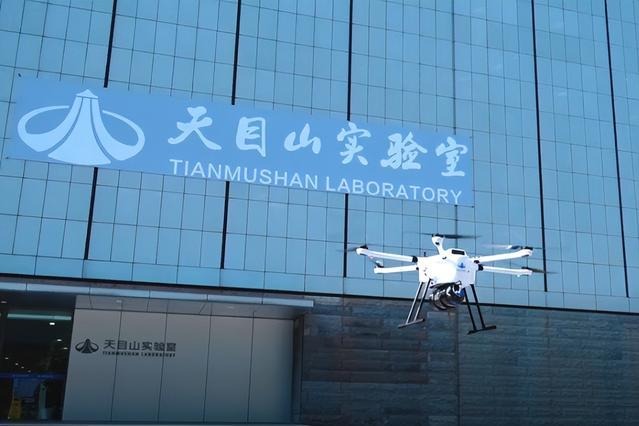Inflation spike not worrisome

CPI increase still within comfort zone and will not lead to major policy changes
Although inflation rose to a seven-month high in September, it was within the comfort zone for China's economy and will not lead the government to revise its reform policies, economists says.
The National Bureau of Statistics reported on Oct 14 that the consumer price index, the main gauge of inflation, increased 3.1 percent year-on-year in September, compared with 2.6 percent in August.
The figure is higher than the average of 2.8 percent forecast by financial institutions. However, Qu Hongbin, HSBC co-head of Asian economics research and greater China chief economist, says the September figure is still lower than the alarm line of 3.5 percent.
In the third quarter, China's CPI averaged 2.8 percent, compared with 2.4 percent in the first and second quarters.
Most noticeably, food prices, which account for about 30 percent of the CPI calculation, grew by a 16-month high of 6.1 percent in September from a year earlier, which the bureau attributed to strong seasonal demand and disruptive weather conditions.
Non-food prices increased by 1.6 percent year-on-year, compared to 1.5 percent in August, the bureau said.

Tang Jianwei, a senior economist at the Bank of Communications, says that the CPI is likely to continue rising in the fourth quarter.
"CPI growth in October to December will be moderate as domestic demand has not largely rebounded, while food prices may maintain a benign rise, and there is less imported inflation," Tang says.
In September, the producer price index, an indicator of industrial production inflation, declined 1.3 percent year-on-year, compared with a 1.6 percent decrease in August, thanks to moderate improvement in domestic demand, the NBS says.
"With PPI having remained in negative territory for 19 consecutive months, upstream price pressure will continue to be manageable," says Ma Xiaoping, an HSBC economist.
JPMorgan Chase & Co forecast that the full-year CPI is likely to stand at 2.7 percent, much lower than the government's target of 3.5 percent.
Zhu Haibin, China chief economist of JPMorgan, the second largest bank in the world in terms of assets, says: "The relatively benign inflation dynamics suggest that stabilizing growth and economic reform remain the priorities for policymakers in the near term."
While September CPI rose above 3 percent, it is unlikely to trigger changes in monetary policy, says Zhu.
"We expect no change in benchmark interest rates and the reserve requirement ratio throughout the year, and credit growth will moderate further," he says.
Because of the rebound of domestic and external demand, the recent economic indicators including industrial output, fixed-assets investment and the manufacturing purchasing managers' index all showed positive signals.
Economists say that China's economic growth is expected to accelerate slightly in the third quarter. They anticipate that GDP growth may rebound to 7.6 to 7.8 percent in the third quarter, up from 7.5 percent in the second.
Ding Zhijie, dean of the School of Banking and Finance at the University of International Business and Economics in Beijing, says that although the economy has improved in the short term, the long-term challenges require the government to further improve structural reform.
"Credit expansion is no longer efficient to support sustainable economic growth. The government should focus on eliminating excess industrial production capacity and lower the threshold for private capital to enter the service industry, which can release new economic growth energy," Ding says.
Duncan Freeman, a senior research fellow at Brussels Institute of Contemporary China Studies, says the latest CPI figure shows a degree of volatility, and may not indicate a trend for higher inflation.
But the PPI figure reflects a problem, suggesting a continued imbalance between insufficient demand and overcapacity in many sectors of the economy, he says.
Kamel Mellahi, professor of strategic management at Warwick Business School in the UK, says one should not read too much into the latest CPI figure.
"The increase in CPI reflects, to a very large extent, recent bad weather that decreased food inventory, which subsequently drove food prices up. We witnessed the same thing back in February when CPI jumped to a 10-month high because of seasonal spending during the Lunar New Year."
Small businesses are also feeling the pinch from the unexpectedly large rise in retail price inflation in September and hope price rises will moderate for the rest of the year.
Li Da, the owner of a chain bakery in Wenzhou, Zhejiang province, has felt the impact of higher prices when he did his monthly shopping for September.
"The prices of eggs, flour and milk have risen a bit in the past three months, while vegetables turned out to be more expensive, so I had to squeeze the budget for ingredients to make even a limited profit," says Li. He adds that price fluctuations are a seasonal phenomenon, especially during frequent holidays in the autumn, which is fine as things will probably stabilize in the remainder of the year.
PPI, which measures inflation at the wholesale level, has been in negative territory for 19 consecutive months.
On a monthly basis, the PPI rose 0.2 percent in September, up slightly from a 0.1 percent increase for August, a positive sign of recovery, industrial producers say.
"Demand for steel-related products has increased slightly since August, compared with the beginning of the year, which was extremely gloomy with very few orders," says Zhang Weizhong, the general manager of Shanghai Kaike Pipe Industry Co Ltd.
Zhang's company has regular dealings with large state-owned companies such as China National Petroleum Corp, the nation's largest oil and gas producer and supplier and China Petrochemical Corp, a large petroleum and petrochemical group.
"The competition turned to be tougher compared with previous years as the government had fewer projects launched and postponed certain projects to lower fiscal expenditures, given slower economic growth," Zhang says.
Zhang says that there wouldn't be any broad-based, obvious improvement for the year, but things would definitely bounce back when delayed projects resume nest year.
The NBS figures show that both the ex-factory prices of products and the purchase cost of materials were up 0.2 percent, against a gain of 0.1 percent in August.
"I've received the latest quarterly report from my clients in Europe (showing) that sales increased nearly 10 percent compared with the previous year, which would have an effect on future orders very soon," says Chen Xi, manager of Wenzhou Dongyi Shoes Co Ltd.
To stand out amid tough industry competition, Chen has managed to raise prices for products with more added-value elements such as design and technical manufacturing processes.
Zhang Chunyan in London and Yu Ran in Shanghai contributed to this story.
chenjia1@chinadaily.com.cn
| Source: National Bureau of Statistics, Photo: Wang Jing / China Daily, Graphic: Feng Xiuxia / China Daily |
(China Daily Africa Weekly 10/18/2013 page21)
Today's Top News
- Evidence mounts of Japan's wartime atrocities
- Gunmen kill 11, wound many on Sydney beach
- Study finds Earth's deep water reservoirs
- China remembers victims of Nanjing Massacre 88 years on
- Philippines' provocations will avail it nothing: China Daily editorial
- China steps up financial support to spur consumption































